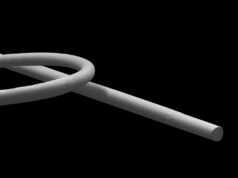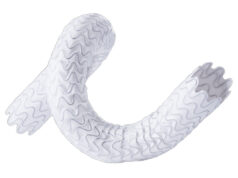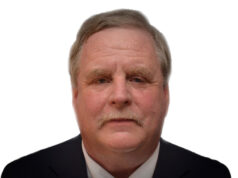
Renal Interventions reflects some unique perspectives and uncomfortable learnings from Yinhui-Lim Hartono, a resident new to the field of dialysis access, and Kathleen Rickert, a vascular access nurse, both from the vascular access center at Asklepios Klinik Barmbek (Hamburg, Germany). Along with Frida Fondelius, a dialysis nurse and vascular access coordinator at Skåne University Hospital (Malmö, Sweden), the trio elaborates on involving patients more and ironing out hierarchies that contribute to particular challenges, ahead of the 5th Hamburg Dialysis Access Symposium (8–9 September 2023, Hamburg, Germany), a meeting directed by Robert Shahverdyan (Hamburg, Germany). Shahverdyan was instrumental in convening these interviews to shed light on how to improve multidisciplinary vascular access teams.
Hartono is keen to forefront the complexity and sometimes “overwhelming” number of things to learn as a new member of the access team. “Being new to the field, I am surprised at the widespread unawareness of the complexity of vascular access. It is a journey of life-long learning as the dialysis access field is constantly evolving with new technologies and advancements,” she says.
Fondelius shares a different slant as a coordinator. She believes the role is a pivotal one for the staff and vitally, for providing broad and reliable information to patients. “I help build and keep the team together and promote collaboration between the nephrology unit and the vascular surgery unit. This leads me to suggest that the role of a vascular access coordinator is a must— above all as a support for the nurses and doctors and for the patients, especially those who have several vascular access problems.
“Whenever there is need for a new access to be established, we always highlight the option of home dialysis, although we are in the vascular access meeting. For every patient we handle in the access meeting, we start our presentations considering why the patient is not suitable for peritoneal dialysis,” she explains.
Rickert, for her part, details that her experiences as a vascular access nurse and a leading renal nurse in the dialysis ward “is as a role model, empowering me to work as a specialist”. She shares the precision needed to assess the s of patients. “Practicing physical examination correctly and fostering the fistula postoperatively are vital and I have started to give lessons to healthcare professionals on the nephrology and dialysis ward at our hospital and other clinics on these topics. My role as an interface among the dialysis ward, the nephrology ward, the vascular access centre and the nephrological ambulance helps to bring together an interdisciplinary team equipped with optimised processes and forges a good relationship among the relevant stakeholders for best patient care,” she avers.
“With my acquired knowledge, I empower nurses to widen their perspectives beyond just sticking needles into fistulas. They learn about a 360-degree approach to a created fistula, its haemodynamics and flow dynamics. Moreover, I underline how important our role is to be a nurse for our patients with focus on physical examination, cannulation and advising patients regarding self-care. Awareness and patient-centricity for all caregivers is what I would like to aim for,” she adds.
Multidisciplinary teams: common goals, listening and trusting
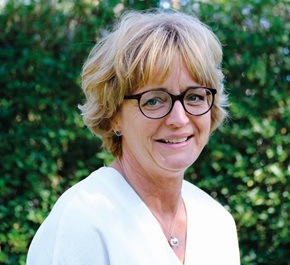
Fondelius overturns the idea of individualism. “In a multidisciplinary team, you must be prepared to listen to and trust others. If all members contribute to the discussion and to the same goal, we can find the best solution for this patient here and now.”
But she also sinks the myth that this is easy. “Some people are strong personalities and individualists. I think Sweden is an ‘equal’ country, so I have had no occasion to think that I have met any challenges just because I am a woman,” she adds.
Rickert, while emphasising that multidisciplinary teamwork is necessary to deliver the best patient care, also acknowledges that it is “hard to implement”. “We are all humans and people with feelings who are confronted daily with hierarchy especially in the business and system of delivering medicine.” She pushes to intensify the notion that: “In working with others, we should take words not personally, but objectively and accept when someone else knows more than ourselves. We must treat everybody with respect and have the willingness to understand the perspectives of others. This is mandatory in my opinion for everyone in the multidisciplinary team to reach common goals,” she says.
Hartono closes out the issue with the words: “Communication, understanding what each member is trying to achieve through their work, and interdisciplinary exchange are most important.”
Listening more to patients
Fondelius makes a strong case for learning from patients. “I have never met a patient who does not want to tell their story. If we are prepared to listen, we can learn a lot. Listen more to the patients—and include them even more in the multidisciplinary discussion. We can plan as much as we want, but if we do not include the patient, the outcome will be limited,” she urges.
Rickert echoes her views. “I would like to empower patients to take more care of themselves. Enabling self-responsibility often results in more and better quality of life. To improve the patient’s kidney journey, teaching physical self-examination of their own fistula, self-cannulation and home dialysis are the milestones of that journey. Patients must be informed of these issues far before their first treatment.”
Ultrasound-guided cannulation
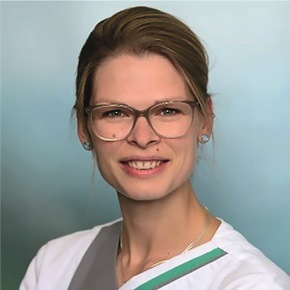
Rickert alludes to the shift enabled by technological refinement in imaging. “When I started to work at the dialysis unit, I knew nothing about vascular access. I just knew about sticking needles into the fistula and taking them off four hours later. When I had trouble during the treatment, I got stressed, tried to reposition the needles and eventually sought help. In 2018, I learned ultrasound-guided cannulation, my personal gamechanger, and have had no issues with access complications any longer, with the end and most important result being: satisfied patients.
“In situ ultrasound-guided cannulation means to guide the needle safely in the middle of the vessel under ultrasonic observation. In my opinion every healthcare professional working in the field of dialysis should be trained in point-of-care-ultrasound, or POCUS, cannulation,” she states.
Hierarchy casts a shadow
Rickert recounts the noteworthy challenges she has faced, relating that she too, sees these as “less about being ‘a woman’, and more about being ‘a nurse’ in a team”.
“We talk about hierarchies and associated conflicts. When nurses (who are often women) can possess greater experience but the doctor ‘takes the lead’, this contributes to imbalances in the structure of clinical practice. Often, mandates are not given according to knowledge and experience.” That can threaten to stymie best practices and “that has been a very hard lesson to learn for me,” she says.
Hartono essentially agrees but traces an ongoing challenge: “Women do face certain challenges in the medical field due to gender bias, as well as unconscious bias or stereotypes that persist in the medical field, which is also seen among (older) patients. I have had a lot of experiences with this,” she says, noting another challenge is balancing work responsibilities with family commitments.
Rickert then tracks back to “the overarching goal” and her “driving force” which is to deliver the best possible care to patients. A recalibration of ‘authority figures’, is what she seeks and states she will not stand down until a more uniform “hierarchy” is achieved so that nurses can meet caregivers and stakeholders at eye level. “My role is that of a well-respected member of the multidisciplinary clinical team,” she avers.

